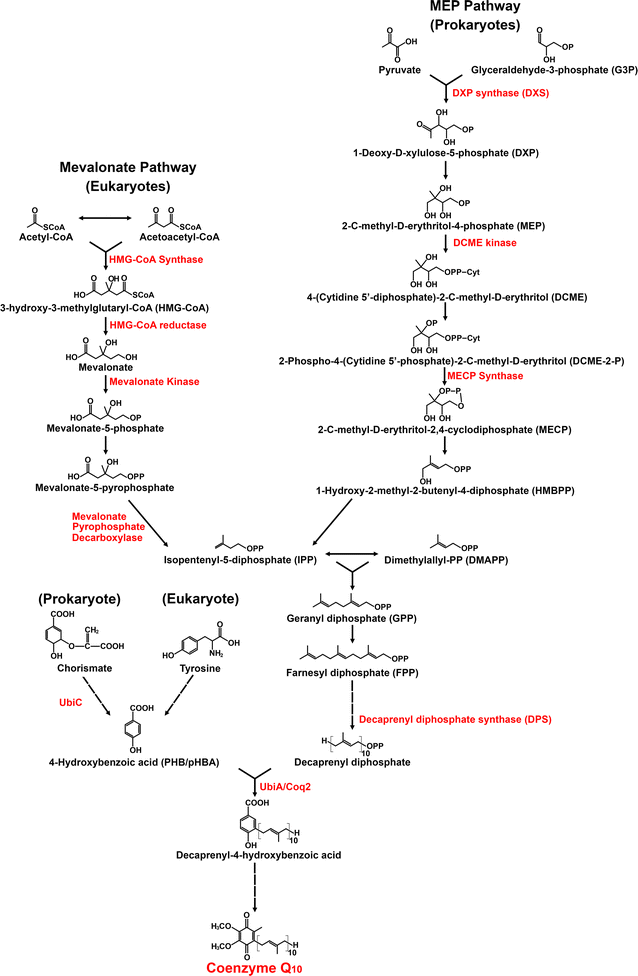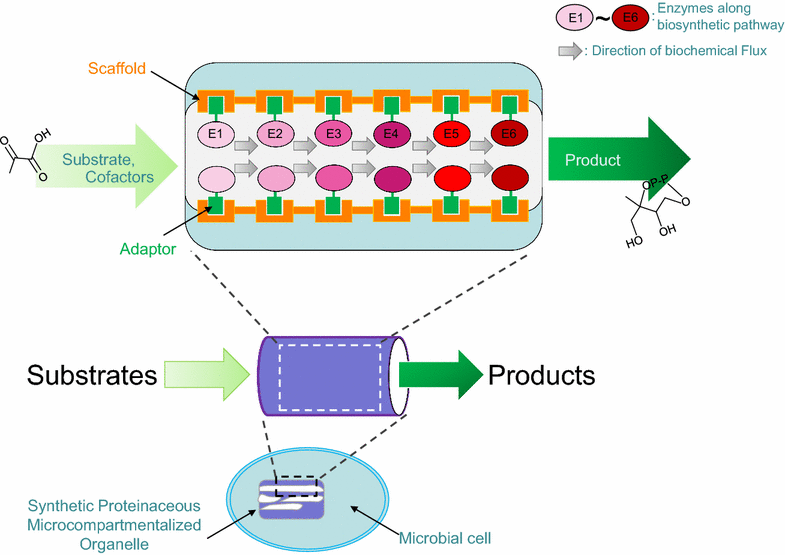Cellular factories for coenzyme Q10 production
- PMID: 28253886
- PMCID: PMC5335738
- DOI: 10.1186/s12934-017-0646-4
Cellular factories for coenzyme Q10 production
Abstract
Coenzyme Q10 (CoQ10), a benzoquinone present in most organisms, plays an important role in the electron-transport chain, and its deficiency is associated with various neuropathies and muscular disorders. CoQ10 is the only lipid-soluble antioxidant found in humans, and for this, it is gaining popularity in the cosmetic and healthcare industries. To meet the growing demand for CoQ10, there has been considerable interest in ways to enhance its production, the most effective of which remains microbial fermentation. Previous attempts to increase CoQ10 production to an industrial scale have thus far conformed to the strategies used in typical metabolic engineering endeavors. However, the emergence of new tools in the expanding field of synthetic biology has provided a suite of possibilities that extend beyond the traditional modes of metabolic engineering. In this review, we cover the various strategies currently undertaken to upscale CoQ10 production, and discuss some of the potential novel areas for future research.
Keywords: Antioxidant; Coenzyme Q10; Industrial biosynthesis; Isoprenoid; Protein engineering; Synthetic biology.
Figures




Similar articles
-
Coenzyme Q10 production in plants: current status and future prospects.Crit Rev Biotechnol. 2015 Jun;35(2):152-64. doi: 10.3109/07388551.2013.823594. Epub 2013 Oct 3. Crit Rev Biotechnol. 2015. PMID: 24090245 Review.
-
Enhanced production techniques, properties and uses of coenzyme Q10.Biotechnol Lett. 2014 Oct;36(10):1917-26. doi: 10.1007/s10529-014-1587-1. Epub 2014 Jul 22. Biotechnol Lett. 2014. PMID: 25048223 Review.
-
Production of Coenzyme Q10 by microbes: an update.World J Microbiol Biotechnol. 2022 Aug 19;38(11):194. doi: 10.1007/s11274-022-03326-0. World J Microbiol Biotechnol. 2022. PMID: 35984526 Review.
-
[Production of coenzyme Q10 by metabolically engineered Escherichia coli].Sheng Wu Gong Cheng Xue Bao. 2015 Feb;31(2):206-19. Sheng Wu Gong Cheng Xue Bao. 2015. PMID: 26062342 Chinese.
-
Increasing coenzyme Q10 yield from Rhodopseudomonas palustris by expressing rate-limiting enzymes and blocking carotenoid and hopanoid pathways.Lett Appl Microbiol. 2021 Jul;73(1):88-95. doi: 10.1111/lam.13479. Epub 2021 Apr 27. Lett Appl Microbiol. 2021. PMID: 33783839
Cited by
-
Resistance to Chemotherapeutic 5-Fluorouracil Conferred by Modulation of Heterochromatic Integrity through Ino80 Function in Fission Yeast.Int J Mol Sci. 2023 Jun 26;24(13):10687. doi: 10.3390/ijms241310687. Int J Mol Sci. 2023. PMID: 37445861 Free PMC article.
-
Changes in lipids and medium- and long-chain fatty acids during the spontaneous fermentation of ripened pu-erh tea.Curr Res Food Sci. 2024 Aug 28;9:100831. doi: 10.1016/j.crfs.2024.100831. eCollection 2024. Curr Res Food Sci. 2024. PMID: 39281340 Free PMC article.
-
Coenzyme Q10 Ameliorates Pancreatic Fibrosis via the ROS-Triggered mTOR Signaling Pathway.Oxid Med Cell Longev. 2019 Feb 7;2019:8039694. doi: 10.1155/2019/8039694. eCollection 2019. Oxid Med Cell Longev. 2019. PMID: 30881598 Free PMC article.
-
Cardiac Oxidative Stress and the Therapeutic Approaches to the Intake of Antioxidant Supplements and Physical Activity.Nutrients. 2021 Sep 30;13(10):3483. doi: 10.3390/nu13103483. Nutrients. 2021. PMID: 34684484 Free PMC article. Review.
-
Impairment of carotenoid biosynthesis through CAR1 gene mutation results in CoQ10, sterols, and phytoene accumulation in Rhodotorula mucilaginosa.Appl Microbiol Biotechnol. 2022 Jan;106(1):317-327. doi: 10.1007/s00253-021-11673-5. Epub 2021 Dec 15. Appl Microbiol Biotechnol. 2022. PMID: 34910239
References
-
- Kawamukai M. Biosynthesis of coenzyme Q in eukaryotes. Biosci Biotechnol Biochem. 2016;80:23–33. - PubMed
-
- Lankin VZ, Tikhaze AK, Kapel’ko VI, Shepel’kova GS, Shumaev KB, Panasenko OM, Konovalova GG, Belenkov YN. Mechanisms of oxidative modification of low density lipoproteins under conditions of oxidative and carbonyl stress. Biochemistry. 2007;72:1081–1090. - PubMed
Publication types
MeSH terms
Substances
LinkOut - more resources
Full Text Sources
Other Literature Sources
Medical

